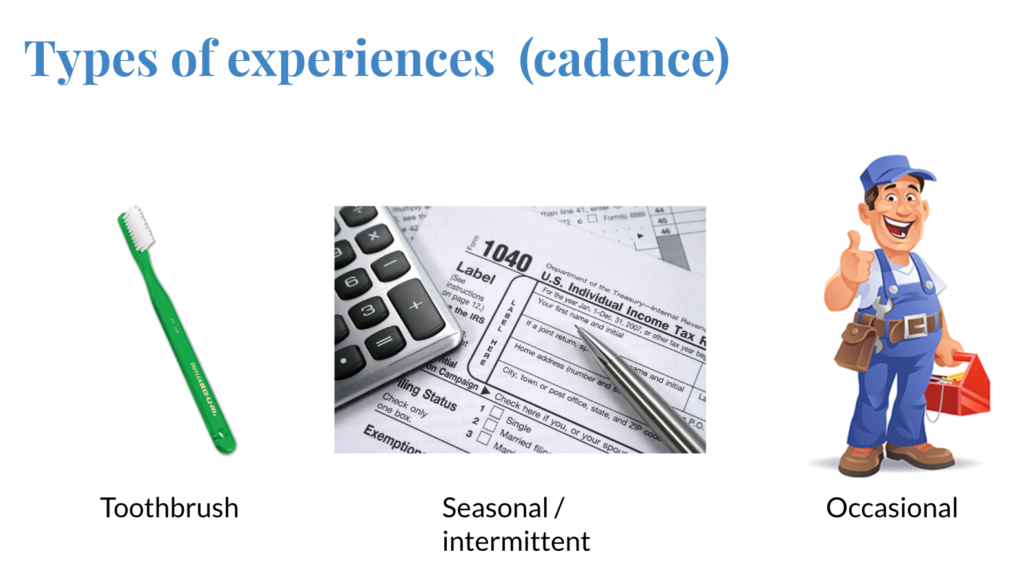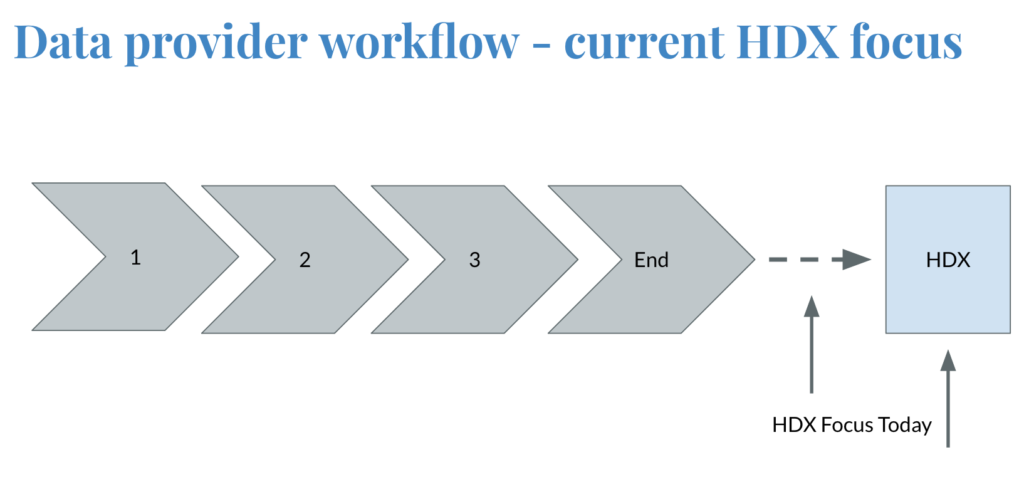Share
During my fellowship, I conducted user experience research to identify opportunities to improve the Humanitarian Data Exchange (HDX) platform. Over the course of June and July 2018, I interviewed 22 current HDX users. In addition, I learned a tremendous amount through informal communications with the other Data Fellows, Centre staff and stakeholders. I was also fortunate to be able to build on previous research undertaken by the HDX team.
Through this work, I examined three major areas: tactical improvements, strategic opportunities and internal practices. For each area, I raised questions and offered ideas for the team to consider.
Tactical Improvements
There are always opportunities to improve the usability of a product. This is especially important for HDX where a flood of new users (or returning users who haven’t used it in a while) come to the platform at the onset of a humanitarian crisis.

This gets to the issue of cadence. The less often users engage with an experience, the harder it is to increase complexity. As the reach of HDX expands and the user base becomes more diverse, there will be more users that are re-learning the interface everytime they come back. During a crisis, many new users will come to the platform with time sensitive tasks. Even some ‘power users’ may not be very familiar with HDX due to routine or automation (e.g., they share data through an API).
One area that I reviewed closely was the onboarding experience. Although the overall process is straightforward, it misses the opportunity to get people excited about the mission of HDX. The site’s tagline—‘Find, share, and use humanitarian data all in one place’—needs to be reinforced during onboarding. In addition, the HXL standard should be a core differentiator but is not currently mentioned, and people are not driven to underused areas of the site, such as their user dashboard or HDX Tools.

As new features are released, it is easy to look at that area in isolation. It is better to define journeys or flows to uncover the gaps and irregularities that trip up users, such as uploading data or searching for a specific dataset. As the experience becomes more complex, taking time to assess the experience through the lens of these journeys becomes even more important. While specific features or pages might work well on their own, a journey perspective helps to make sure everything works together as a full experience.
Strategic Opportunities
A major thread of my research was to examine how HDX fits into the larger workflow of data contributors. I identified several opportunities for the HDX team to focus on integrating upstream processes rather than just the moments when users are on the site.
For instance, one of the biggest barriers organizations had to uploading data came from the fact that they were struggling to organize data internally. If HDX can help solve that problem, it will make things easier for organizations when they are ready to share their data. This is important because it helps HDX to align with existing work processes, and also delivers more value to users. More value usually results in more and deeper engagement.
I encountered instances where participants felt that it was easier to find data from their organization on HDX rather than through any internal mechanism. There are a number of ways the HDX team can support organizations to improve their internal processes, from developing guidance for small to medium sized organizations to helping larger organizations establish an internal facing version of HDX.


Opportunities to provide value upstream by establishing internal versions of HDX within partner organizations.
Internal Practices
I was impressed by the feedback-driven culture of the HDX team, but it is important to make sure that this is harnessed in the most productive way. It is critical that informal feedback processes become more standardized and that there are mechanisms to surface user insights across the whole team.
There is also a danger that focusing on feedback from current users means that initiatives that would have the biggest impact for new user types may be deprioritized. As the HDX roadmap is further developed, it’s critical that the team casts a wide net both in terms of user type and location. At the same time, the team needs to be clear about who it is optimizing the platform for, as in for a data manager in the field or a policy maker in headquarters.
One of the exciting things about a platform like HDX is that there are so many areas that could be developed. The biggest challenge is figuring out how to prioritize initiatives. The Centre and the HDX team have done an amazing job to date to build a platform that solves a real need and delivers value to a lot of users. It is almost certain that HDX will see a better return on investment if the team build complete experiences for a subset of users at a time rather than build an incomplete experience for all users.
Read the rest of the blogs by the 2018 Data Fellows, including their work on predictive analytics, data science and data storytelling. Learn more about the programme from Senior Data Fellow Stuart Campo in Part 1 and Part 2 of his summary posts. Plus, watch the Data Fellows summary video here.
